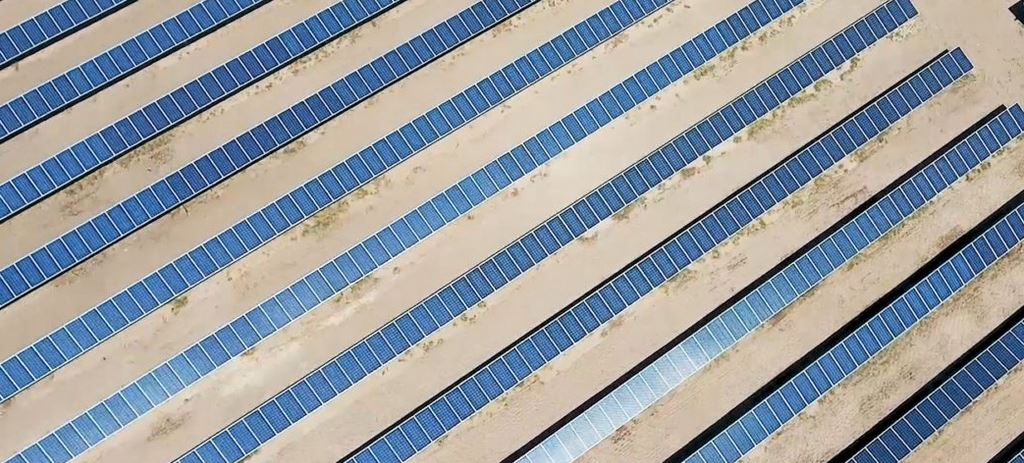Scientists at the University of California, Irvine; the California Institute of Technology; and the Carnegie Institution for Science have released an analysis of the U.S. electricity grid managing expanding volumes of intermittent generation in the research journal Energy & Environmental Science.
Geophysical constraints on the reliability of solar and wind power in the United States posits that the U.S. electrical grid could be 80% powered by a solar-heavy+wind power combination using just 12 hours of energy storage to smooth out the variability.
The paper also shows that a wind-heavy+solar power electricity grid would require a nationwide high voltage DC (HVDC) network to move electricity from wind energy dense mid-western regions toward the coasts. The solar heavy network wouldn’t need energy storage with an HVDC network.
To reach a 100% wind+solar U.S. electricity grid would require 3 weeks of energy storage. According to lead author Dr. Matthew R. Shaner.
Our team took a simplified approach aimed at understanding fundamental geophysical constraints on wind and solar power. We looked at solar and wind power availability on an hourly basis across the U.S. and determined how much of current electricity demand could be met by varying amounts of solar panels, wind turbines, and energy storage, in addition to changes in the electricity grid.
The U.S. currently uses about 3,900 terawatt-hours (TWh) per year. A 12 hour chunk of that would be about 5.4 TWh. At a cost of $350 per kilowatt-hour (kWh), that would cost $1.9 trillion. If each of the 110 million single family homes in the U.S. were to install an energy storage system, and split the total volume needed with the electricity utilities, we’d need approximately 24kWh/home.
About equal to a couple of Powerwalls, a little larger than a Sonnen or 1/2 of a Model 3.
Supplemental information was included with the abstract at the journal website. In it were visualizations of various models, some examples below. The models were mixtures of solar, wind, over sizing these two resources and energy storage. One model, with 100% solar plus 50% over capacity paired with 12 hours of energy storage got us to 93% reliability.
‘Reliability’ is being defined as amounts of periods – one hour each – that the electricity sources meet the projected demand.
In 2012, NREL released a report suggesting the U.S. could meet 80% of its electricity needs with wind and solar, ‘with varying degrees of dispatchability, together with a mix of flexible conventional generation and grid storage, additions of transmission, more responsive loads, and changes in power system operations.’
In April of 2017, the Climate Policy Initiative released another groundbreaking report Flexibility, The path to low-carbon, low-cost electricity grids. In it the group showed that the maximum cost of this, ‘near-total renewable energy-based system is cost competitive today compared with a gas-based system with a $50/tonne carbon price – by 2030 it will be cost-competitive even without a carbon price.’
The team analyzed 36 years of hourly U.S. weather data (1980 to 2015) to understand the fundamental geophysical barriers to supplying electricity with only solar and wind power.
The key takeaway from this report should be that intermittent electricity sources, like wind and solar power, will not mean a loss of the regular electricity delivery that modern humanity has come to expect. While any one of these models probably won’t be exactly what we do, its clear that we have many options to remove CO2 from our electricity grid – as long as we power forward aggressively.
This content is protected by copyright and may not be reused. If you want to cooperate with us and would like to reuse some of our content, please contact: editors@pv-magazine.com.











Interesting, that it has been calculated that 24kWh is the average distributed energy storage needed to make it to 80% alternative power for the Nation. I’m thinking that it would actually be 35kWh to allow the storage battery pack to not have to discharge so deeply, allowing the energy storage system more charge/discharge cycles. This also would give another 10% to 20% emergency power that could be used once in a while IF necessary. The electric and hybrid auto industry has shown the way for battery pack installations. Having say 16kWh of storage available, but using only 70% to 75% of battery capacity will make the battery pack last longer than a regular deep discharge to 80% to 90%.
Bringing battery costs down per kWh of storage and changing chemistries that use less volatile electrolytes, changing to perhaps solid state electrolytes could make BMS systems unnecessary for future battery packs.
yeah! and one more thing…..why doesn’t the U.S. have us run on solar power by now……this way we would have one less bill to worry about during this time.